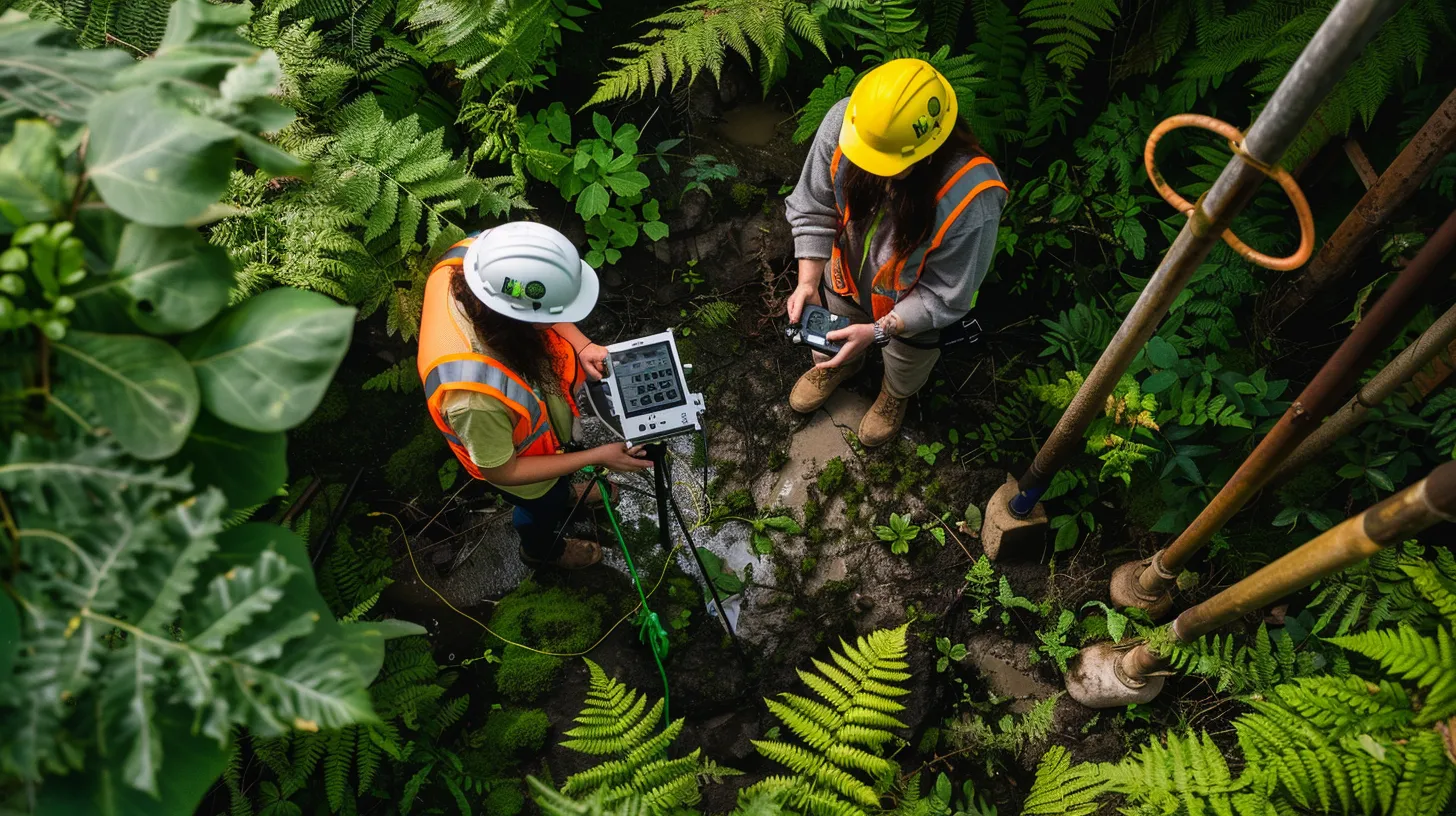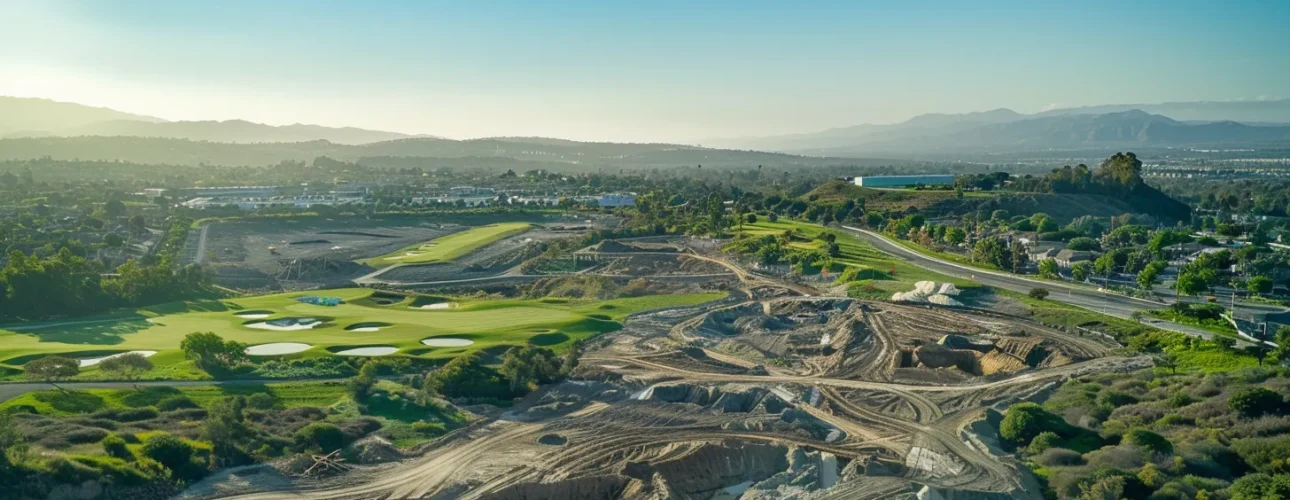Environmental site assessments (ESAs) are critical for identifying potential pollutants on a property, yet many may underestimate their importance. This blog post will outline the essential steps involved in environmental site assessments, including the procedures for Phase I ESA and Phase II ESA. By understanding these processes, readers will gain insights into how effective environmental permitting services can protect investments and ensure compliance. Addressing common challenges in environmental assessments, this content aims to equip readers with the knowledge to navigate inspections and make informed decisions regarding environmental risks.
Key Takeaways
- Environmental site assessments are essential for identifying potential contamination risks in properties
- Regulatory compliance ensures safety and informs stakeholders about potential liabilities during property transactions
- Conducting thorough Phase I assessments is critical for understanding historical site conditions and risks
- Engaging qualified professionals enhances the effectiveness of environmental site assessments and compliance efforts
- Ongoing monitoring post-remediation is necessary to ensure long-term environmental safety and compliance
Understanding Environmental Site Assessments and Their Importance in Utah

Environmental Site Assessments (ESAs) are critical in identifying potential environmental liabilities, particularly in a state like Utah, where the natural environment is intertwined with diverse land uses, including industrial sites, mining operations, agricultural land, and urban development along the Wasatch Front. These assessments ensure that properties comply with local, state, and federal regulations while protecting public health and the environment. In Utah, common applications for ESAs often involve areas with historical industrial activities, agricultural runoff, and mining operations due to the state’s long resource extraction and development history.
Key Applications for ESAs in Utah
- Historical Industrial Sites and Storage Tanks
- Many areas along Utah’s Wasatch Front, including Salt Lake City, Provo, and Ogden, were once home to manufacturing plants, fuel storage facilities, and other industrial operations. Properties with underground or above-ground storage tanks (USTs and ASTs) are common in these regions and often require ESAs to evaluate potential soil and groundwater contamination.
- For example, former gas stations and refineries near the Salt Lake City industrial corridor may require Phase I and II ESAs to assess the risk of hydrocarbons, volatile organic compounds (VOCs), and heavy metal contamination.
- Mining Sites and Resource Extraction Areas
- Utah’s mining legacy, particularly in areas like Bingham Canyon, Park City, and the Uintah Basin, makes ESAs essential when buying or redeveloping land in these regions. Mining activities can leave behind environmental risks such as heavy metal contamination, arsenic, and acid mine drainage.
- A Phase I ESA helps identify any past mining activities, while a Phase II ESA includes soil sampling, groundwater testing, and ecological assessments to determine if environmental remediation is necessary.
- The Barneys Gold Mine and Kennecott Copper Mine are large-scale projects undergoing extensive environmental assessments due to their potential impact on surrounding communities and ecosystems.
- Agricultural Lands and Pesticide Use
- Areas like Cache Valley, Utah Valley, and parts of Weber and Davis Counties have a long history of agricultural production. When agricultural lands are redeveloped for residential or commercial purposes, ESAs assess the risk of contamination from pesticides, herbicides, and fertilizers that may have leached into the soil or groundwater.
- ESAs are particularly important near Utah Lake, where agricultural runoff can contribute to elevated levels of phosphorus and nitrogen, leading to issues such as algal blooms.
- Urban Redevelopment Projects
- The rapid growth of Utah’s cities has led to significant urban redevelopment, especially in downtown Salt Lake City, Provo, and Ogden, where older industrial and commercial buildings are being repurposed into mixed-use developments, office spaces, and residential complexes.
- ESAs help identify potential hazards from asbestos, lead-based paint, fuel storage tanks, or past chemical spills, ensuring safe redevelopment without exposing future occupants to environmental hazards.
- Properties Near Oil and Gas Operations
- With significant oil and gas activity in regions like the Uintah Basin and Duchesne County, properties near active or abandoned well sites often require thorough assessments. Phase I and Phase II ESAs evaluate risks from hydrocarbon spills, produced water contamination, and pipeline leaks to prevent environmental and health risks before development occurs.
- Many areas along Utah’s Wasatch Front, including Salt Lake City, Provo, and Ogden, were once home to manufacturing plants, fuel storage facilities, and other industrial operations. Properties with underground or above-ground storage tanks (USTs and ASTs) are common in these regions and often require ESAs to evaluate potential soil and groundwater contamination.
- For example, former gas stations and refineries near the Salt Lake City industrial corridor may require Phase I and Phase II ESAs to assess the risk of hydrocarbons, volatile organic compounds (VOCs), and heavy metal contamination.
- Utah’s mining legacy, particularly in areas like Bingham Canyon, Park City, and the Uintah Basin, makes ESAs essential when buying or redeveloping land in these regions. Mining activities can leave behind environmental risks such as heavy metal contamination, arsenic, and acid mine drainage.
- A Phase I ESA helps identify any past mining activities, while a Phase II ESA includes soil sampling, groundwater testing, and ecological assessments to determine if environmental remediation is necessary.
- The Bluewater Uranium Mill and Kennecott Copper Mine are large-scale projects that have undergone extensive environmental assessments due to their potential impact on surrounding communities and ecosystems.
- Areas like Cache Valley, Utah Valley, and parts of Weber and Davis Counties have a long history of agricultural production. When agricultural lands are redeveloped for residential or commercial purposes, ESAs assess the risk of contamination from pesticides, herbicides, and fertilizers that may have leached into the soil or groundwater.
- ESAs are particularly important near Utah Lake, where agricultural runoff can contribute to elevated levels of phosphorus and nitrogen, leading to issues such as algal blooms.
- The rapid growth of Utah’s cities has led to significant urban redevelopment, especially in downtown Salt Lake City, Provo, and Ogden, where older industrial and commercial buildings are being repurposed into mixed-use developments, office spaces, and residential complexes.
- ESAs help identify potential hazards from asbestos, lead-based paint, fuel storage tanks, or past chemical spills, ensuring safe redevelopment without exposing future occupants to environmental hazards.
- With significant oil and gas activity in regions like the Uintah Basin and Duchesne County, properties near active or abandoned well sites often require thorough assessments. Phase I and Phase II ESAs evaluate risks from hydrocarbon spills, produced water contamination, and pipeline leaks to prevent environmental and health risks before development occurs.
Common Scenarios Requiring ESAs in Utah
- Commercial Property Transactions
- Buyers and developers typically require a Phase I ESA before purchasing commercial properties to identify environmental concerns that could lead to costly cleanup efforts.
- This is common along the Wasatch Front in areas with mixed-use zones or former industrial corridors, where contamination risks are higher due to historical land use.
- Lending and Financing Requirements
- Financial institutions often require ESAs as part of their due diligence when financing commercial real estate or redevelopment projects. In Utah, this is common for properties near industrial parks or abandoned mining claims.
- Banks and lenders want assurance that environmental liabilities won’t reduce the property’s value or delay project timelines.
- Brownfield Redevelopment Projects
- The Utah Brownfields Program incentivizes redeveloping contaminated properties by offering grants and liability protections. Developers must conduct ESAs to evaluate contamination levels and develop site remediation plans.
- Former industrial sites in Salt Lake City, Tooele, and Park City are common brownfield areas where ESAs have been crucial in revitalization efforts.
- Infrastructure and Transportation Projects
- Construction of roads, bridges, and public transit systems—especially along the growing I-15 corridor—requires environmental assessments to evaluate soil and groundwater contamination risks.
- For example, projects expanding public transit in Salt Lake County may encounter former gas stations or industrial sites that require cleanup before construction.
- Oil Refinery and Chemical Facility Closures
- Utah’s refineries along the Wasatch Front and chemical plants often require comprehensive environmental assessments during decommissioning or redevelopment phases. Phase II ESAs investigate residual contaminants, such as petroleum byproducts, PCBs, and hazardous waste, to ensure safe site closure.
- Buyers and developers typically require a Phase I ESA before purchasing commercial properties to identify any environmental concerns that could lead to costly cleanup efforts.
- Along the Wasatch Front, this is common in areas with mixed-use zones or former industrial corridors, where contamination risks are higher due to historical land use.
- Financial institutions often require ESAs as part of their due diligence when financing commercial real estate or redevelopment projects. In Utah, this is common for properties near industrial parks or abandoned mining claims.
- Banks and lenders want assurance that environmental liabilities won’t reduce the property’s value or delay project timelines.
- The Utah Brownfields Program incentivizes redeveloping contaminated properties by offering grants and liability protections. Developers must conduct ESAs to evaluate contamination levels and develop site remediation plans.
- Former industrial sites in Salt Lake City, Tooele, and Park City are common brownfield areas where ESAs have been crucial in revitalization efforts.
- Construction of roads, bridges, and public transit systems—especially along the growing I-15 corridor—requires environmental assessments to evaluate soil and groundwater contamination risks.
- For example, projects expanding public transit in Salt Lake County may encounter former gas stations or industrial sites that require cleanup before construction.
- Utah’s refineries along the Wasatch Front and chemical plants often require comprehensive environmental assessments during decommissioning or redevelopment phases. Phase II ESAs investigate residual contaminants, such as petroleum byproducts, PCBs, and hazardous waste, to ensure safe site closure.
Integrating Sampling and Monitoring into ESAs in Utah
In addition to identifying past activities, ESAs in Utah often integrate advanced environmental sampling protocols to assess contamination risks accurately. For example:
- Groundwater Sampling is particularly important in areas like the Jordan River watershed or near Utah Lake, where groundwater contamination from industrial and agricultural activities poses risks to local water supplies.
- Soil Sampling: Used to detect contamination from petroleum products, heavy metals, or pesticides, especially in former industrial zones or farmland.
- Air Quality Monitoring: Relevant in urban areas with historical chemical storage or use, where volatile organic compounds (VOCs) may pose inhalation risks.
Localized Considerations for Utah’s Environmental Regulations
Utah’s regulatory framework for ESAs involves coordination with multiple agencies to ensure environmental compliance: Utah’s Voluntary Cleanup Program is a key component of this effort.
- Utah Department of Environmental Quality (UDEQ): Oversees cleanup programs and remediation under the Utah Division of Environmental Response and Remediation.
- Utah Brownfields Program: Encourages the cleanup and redevelopment of contaminated sites through financial incentives and regulatory assistance.
- Federal Oversight: In cases involving hazardous waste or contamination under the jurisdiction of the Environmental Protection Agency (EPA) or Resource Conservation and Recovery Act (RCRA).
Ensuring Successful Outcomes for Utah Developers
Navigating the ESA process in Utah requires expertise in environmental regulations, local land use history, and sampling protocols. At Anderson Engineering, we provide:
- Phase I and Phase II ESAs: Comprehensive site assessments to identify, evaluate, and mitigate environmental risks.
- Sampling and Monitoring Plans: Tailored protocols for soil, water, and air quality testing, ensuring thorough site analysis.
- Regulatory Coordination: We work directly with UDEQ and other agencies to streamline the permitting and approval process.
- Mitigation and Remediation Planning: Developing cost-effective strategies for addressing contamination and ensuring project timelines stay on track.
Key Takeaways for Developers in Utah
- Identify Risks Early: Understanding historical land use and contamination risks prevents unexpected delays.
- Engage Local Experts: Firms with local knowledge can anticipate regional challenges and tailor solutions accordingly.
- Prepare for Mitigation: Budget for potential remediation efforts as part of your project plan.
Schedule a consultation with Anderson Engineering today to discuss your project’s ESA needs and get the expertise required to navigate Utah’s complex environmental landscape efficiently.
Defining Environmental Site Assessment and Its Purpose
Environmental Site Assessments (ESAs) are systematic processes to identify potential contamination and risks associated with properties, particularly concerning petroleum and other hazardous materials. The primary purpose of an ESA is to fulfill regulatory requirements, ensuring compliance with local and federal regulations while informing stakeholders about potential liabilities. Integrating laboratory analysis and thorough research, ESAs provide essential insights that can guide property transactions and mitigate future environmental or financial concerns.
Identifying Common Applications and Scenarios
Environmental Site Assessments (ESAs) are widely used in various scenarios to ensure safety and compliance regarding hazardous waste management. For instance, properties with historical storage tanks may require detailed assessments to evaluate potential groundwater contamination risks. Additionally, industries utilizing information technology for environmental monitoring often integrate sampling protocols as part of their ESA process, allowing for a comprehensive understanding of the site’s environmental condition.
Recognizing Regulatory Frameworks Guiding Assessments
Regulatory frameworks are critical in guiding Environmental Site Assessments (ESAs), particularly in managing hazardous materials, such as asbestos. Compliance with international standards, such as those set by ASTM International, requires thorough documentation and adherence to specific protocols to ensure safe property transactions and management practices. Entities conducting ESAs must possess the necessary licenses to operate and ensure that all procedures are in alignment with local and federal regulations to mitigate environmental risks effectively:
- Importance of regulatory compliance in ESAs.
- Role of international standards in ensuring assessment accuracy.
- Necessity of licenses for firms conducting environmental evaluations.
- Management of hazardous materials, including asbestos, in assessments.
Site assessments reveal hidden truths beneath the surface. It is time to explore how to prepare for the procedures that will unlock those truths.
Preparing for Environmental Site Assessment Procedures

Establishing clear project objectives and scope is crucial in Environmental Site Assessments (ESAs), as it sets the foundation for evaluating hazards and risks associated with a property. Reviewing existing documentation and data provides essential context while engaging qualified professionals and stakeholders ensures a comprehensive understanding of the site, including any historical landfill activities. Each of these steps will significantly enhance the effectiveness of the assessment process.
Establishing Project Objectives and Scope
Establishing project objectives and scope is a critical first step in conducting a Phase I Environmental Site Assessment, as it determines the direction and focus of the evaluation. This process involves outlining specific goals related to due diligence activities and ensuring that all potential risks associated with waste and contamination are thoroughly assessed. With a clear understanding of the site’s historical context and existing environmental conditions, stakeholders can more effectively identify and address potential liabilities, contributing to informed decision-making throughout the assessment process.
Assessing Existing Documentation and Data
Assessing existing documentation and data is a crucial step in the Environmental Site Assessment (ESA) process, as it provides foundational insights about the site’s history and potential environmental concerns. This includes reviewing relevant contracts, policies, and databases that may contain vital information regarding previous use, hazardous materials, and remediation efforts. By thoroughly evaluating this data, stakeholders can better identify potential risks related to construction projects and ensure compliance with environmental regulations, ultimately guiding informed decision-making throughout the assessment.
Engaging Qualified Professionals and Stakeholders
Engaging qualified professionals and stakeholders is vital to preparing for environmental site assessments, particularly in commercial property transactions. Utilizing experts familiar with relevant laws and regulations can enhance understanding of potential risks, such as those posed by underground storage tanks or prior hazardous materials handling. By fostering collaboration among all parties involved, including local authorities and environmental consultants, stakeholders can ensure a comprehensive approach to environmental assessments that mitigates liabilities and fosters compliance with industry standards.
With preparations complete, the real journey begins. Conducting a Phase I Environmental Site Assessment uncovers the truth beneath the surface.
Conducting Phase I Environmental Site Assessment

Conducting a Phase I Environmental Site Assessment involves several critical steps to ensure thorough evaluation and adherence to environmental protection standards. This includes performing a records review to gather historical data, conducting site reconnaissance for visual inspection, and interviewing key individuals to gain additional insights. The process culminates in preparing a Phase I report that outlines findings and recommendations, highlighting any de minimis conditions.
Performing Records Review to Gather Historical Data
A thorough records review is vital during the Phase I Environmental Site Assessment, as it helps identify potential liabilities associated with the property. This process involves examining historical data related to previous uses, including determining if the site has known contamination issues or has been designated as a brownfield or superfund location. By understanding these historical contexts, stakeholders can gain insights into potential environmental risks affecting future development and investment decisions.
Conducting Site Reconnaissance for Visual Inspection
Conducting site reconnaissance for visual inspection is a fundamental step in the Phase I Environmental Site Assessment process. During this phase, professionals examine the property and its surrounding areas to identify any potential signs of contamination, such as stained soil or damaged building materials that may indicate previous hazardous activities. By thoroughly assessing the site’s physical characteristics, including the presence of underground tanks or improper waste disposal areas, assessors can gather critical insights that inform the overall understanding of environmental risks associated with the property. By assessing factors like soil contaminants, professionals can ensure a thorough evaluation.
Interviewing Key Individuals for Additional Insights
Interviewing key individuals is vital to conducting a Phase I Environmental Site Assessment, as it provides firsthand insights into the property’s history and conditions. Engaging with former property owners, operators, and nearby residents can uncover information about past hazardous materials usage and potential contamination sources that might not be available in records. These conversations allow assessors to comprehensively understand site-specific risks, ensuring the assessment is thorough and informed before moving forward with real estate transactions or development plans.
Link added:
Preparing Phase I Report With Findings and Recommendations
Preparing a Phase I report involves collating the findings and insights from the site assessment process. This document comprehensively accounts for the property’s historical uses, existing environmental conditions, and potential risks identified during the assessment. If necessary, recommendations for further investigation or remediation are also included, ensuring stakeholders have the information needed to make informed decisions regarding the property‘s future.:
The findings from the Phase I assessment laid the groundwork for deeper exploration. Now, the focus shifts to implementing Phase II, where the real work begins and answers emerge. Phase I assessment
Implementing Phase II Environmental Site Assessment

Implementing a Phase II Environmental Site Assessment involves critical steps to investigate further potential contamination identified during Phase I. This includes designing sampling and testing strategies, collecting soil, water, and air samples, and analyzing laboratory results for the presence of contaminants. Following these analyses, a Phase II report is drafted to detail findings, providing stakeholders with the necessary insights to address environmental concerns effectively.
Designing Sampling and Testing Strategies
Designing sampling and testing strategies during a Phase II Environmental Site Assessment is vital for effectively identifying contaminants. This process involves selecting appropriate locations and depths for sampling based on previous findings from Phase I, ensuring that the data collected accurately reflects site conditions. By utilizing scientifically validated testing methods, practitioners can ensure reliable results that guide remediation decisions, ultimately aiding stakeholders in addressing potential environmental liabilities.
Collecting Soil, Water, and Air Samples
Collecting soil, water, and air samples is crucial during a Phase II Environmental Site Assessment, as it provides concrete evidence of potential contamination. The selection of sampling locations is based on findings from the Phase I assessment, ensuring that samples accurately reflect the site’s environmental condition. This process not only aids in identifying the presence of specific pollutants but also supports regulatory compliance, allowing stakeholders to make informed decisions regarding necessary remediation efforts.
Analyzing Laboratory Results for Contaminant Presence
Analyzing laboratory results for contaminant presence is critical in the Phase II Environmental Site Assessment process. This analysis involves interpreting data from soil, water, and air samples to determine the extent and nature of any pollutants on the site. Understanding these results enables stakeholders to make informed decisions regarding necessary remediation actions, ensuring compliance with environmental regulations and minimizing potential liabilities related to contamination.
Drafting Phase II Report Detailing Findings
Drafting the Phase II report is a critical step in the Environmental Site Assessment process, providing a comprehensive overview of the findings from soil, water, and air sample analyses. This document details the extent and nature of any identified contaminants, offering actionable insights for remediation strategies. By clearly outlining the results, potential risks, and recommended steps, the report serves as an essential resource for stakeholders to make informed decisions regarding property safety and regulatory compliance.
The data gathered now reveals the ground’s secrets. It is time to weigh the risks and decide on a path forward.
Evaluating Risks and Making Decisions
Evaluating risks during Environmental Site Assessments (ESAs) involves assessing contaminant levels against regulatory standards, determining potential impacts on human health and the environment, and exploring remediation options based on assessment results. Each of these areas is crucial for understanding the extent of contamination and guiding stakeholders toward informed decisions regarding effective management and remediation strategies.
Assessing Contaminant Levels Against Regulatory Standards
Assessing contaminant levels against regulatory standards is a critical aspect of Environmental Site Assessments (ESAs), as it determines whether detected pollutants pose a risk to human health and the environment. Practitioners compare test results from soil, water, and air samples to established thresholds, ensuring compliance with local and federal guidelines. Furthermore, this assessment enables stakeholders to identify necessary remediation actions, ultimately guiding decisions crucial for property safety and regulatory compliance.
Determining Potential Impacts on Human Health and Environment
Determining potential impacts on human health and the environment involves assessing the severity of contamination and its potential exposure risks. This assessment focuses on understanding how detected pollutants could affect nearby communities, ecosystems, and public safety. For example, suppose soil tests reveal high levels of lead or other hazardous substances. In that case, stakeholders must evaluate exposure pathways—such as dust inhalation or direct contact with contaminated soil—to implement effective remediation strategies that minimize risks to human health and environmental integrity. Formulating a soil pollution risk assessment and characterization
Exploring Remediation Options Based on Assessment Results
Exploring remediation options based on assessment results is crucial for addressing identified environmental issues effectively. Stakeholders must consider various strategies, such as soil excavation, bioremediation, or groundwater treatment, depending on the specific contaminants and their concentrations found in the Environmental Site Assessment (ESA). By understanding the extent of contamination, decision-makers can select appropriate remediation measures that not only comply with regulatory requirements but also protect public health and the surrounding environment:
- Identify the type of contaminants present and their associated risks.
- Select remediation strategies based on effectiveness and cost-efficiency.
- Engage qualified experts to implement and oversee remediation efforts.
- Monitor progress and adapt strategies as necessary to ensure compliance.
After assessing the risks, the focus shifts to the next essential steps. Following up ensures no detail is overlooked, building a clearer path forward.
Following Up After Environmental Site Assessment

Following an Environmental Site Assessment (ESA), stakeholders must focus on planning and executing required remediation activities to address identified contamination. This process involves performing monitoring and maintenance post-remediation to ensure ongoing safety and environmental integrity. Furthermore, ensuring compliance with reporting requirements and regulations is essential for maintaining accountability and transparency throughout the remediation process.
Planning and Executing Required Remediation Activities
Planning and executing required remediation activities is a critical phase following an Environmental Site Assessment (ESA). Stakeholders must develop a detailed remediation plan that outlines specific strategies tailored to the identified contaminants, ensuring compliance with regulatory standards. By collaborating with environmental engineers and experienced contractors, organizations can implement effective solutions such as soil excavation or groundwater treatment, minimizing risks associated with contamination while protecting public health:
Performing Monitoring and Maintenance Post-Remediation
Monitoring and maintenance post-remediation are crucial to ensure that the site’s environmental conditions remain safe and comply with regulatory standards. Regular assessments help identify any resurgence of contaminants that may have been overlooked during initial remediation efforts. Additionally, maintaining clear documentation of monitoring activities is essential for demonstrating compliance and fostering trust with stakeholders, ultimately reaffirming the commitment to environmental stewardship and public health.
Ensuring Compliance With Reporting Requirements and Regulations
Ensuring compliance with reporting requirements and regulations is fundamental to the post-assessment phase in Environmental Site Assessments (ESAs). Stakeholders must submit timely reports that detail findings, remediation actions taken, and ongoing monitoring results, all while adhering to local, state, and federal regulations. This diligent documentation not only demonstrates transparency and accountability but also aids in maintaining public trust and ensuring that all necessary steps have been taken to mitigate environmental risks associated with the property.
Conclusion
Environmental Site Assessments (ESAs) are essential for identifying potential contamination risks and ensuring compliance with regulatory standards. By following key steps such as establishing project objectives, conducting thorough inspections, and engaging qualified professionals, stakeholders significantly enhance the safety and value of properties. The insights gained from Phase I and II assessments guide informed decision-making regarding remediation and management strategies. Ultimately, ESAs serve not only to protect public health and the environment but also to facilitate responsible property transactions that align with industry regulations.





